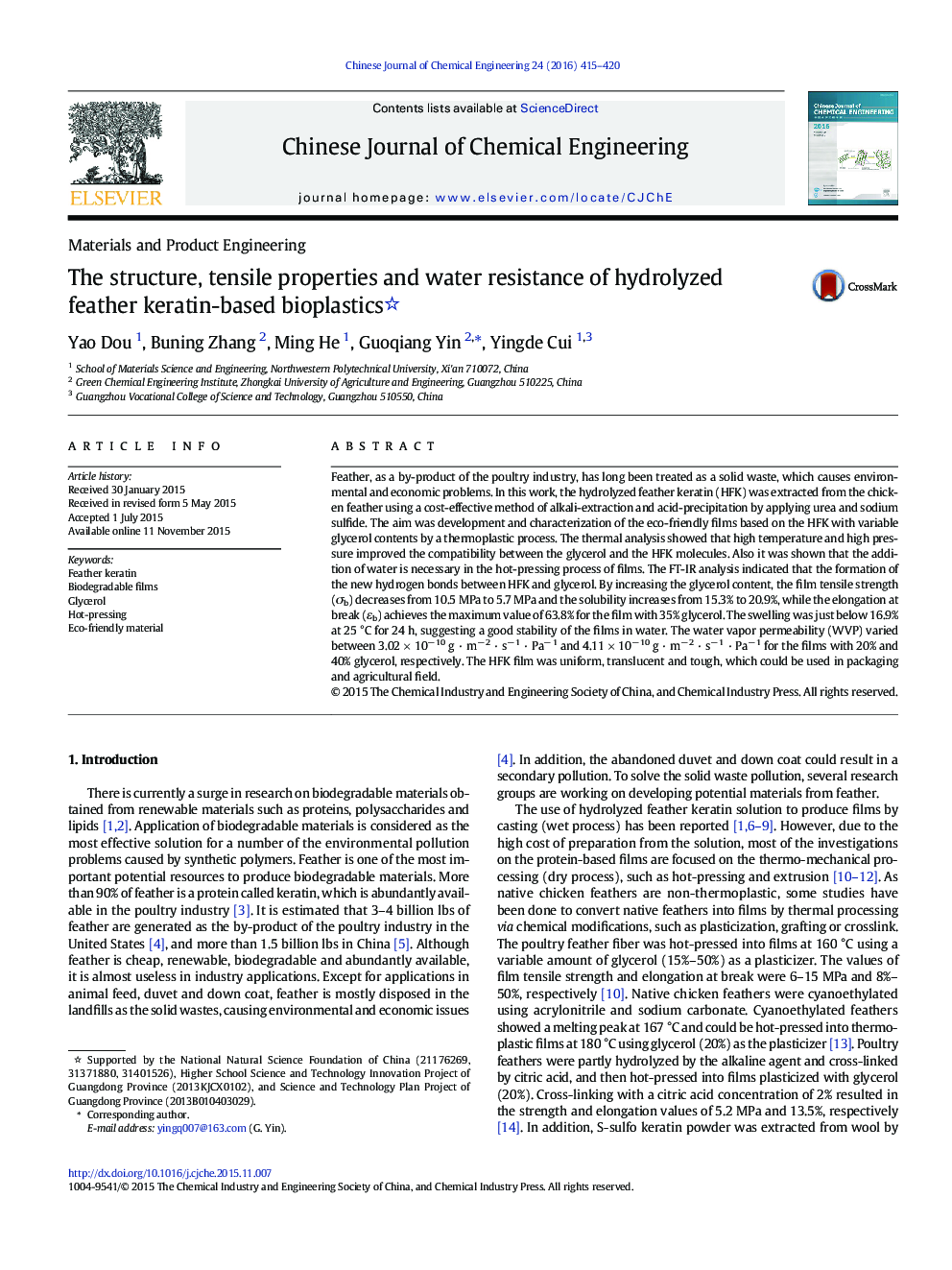| Article ID | Journal | Published Year | Pages | File Type |
|---|---|---|---|---|
| 165971 | Chinese Journal of Chemical Engineering | 2016 | 6 Pages |
Feather, as a by-product of the poultry industry, has long been treated as a solid waste, which causes environmental and economic problems. In this work, the hydrolyzed feather keratin (HFK) was extracted from the chicken feather using a cost-effective method of alkali-extraction and acid-precipitation by applying urea and sodium sulfide. The aim was development and characterization of the eco-friendly films based on the HFK with variable glycerol contents by a thermoplastic process. The thermal analysis showed that high temperature and high pressure improved the compatibility between the glycerol and the HFK molecules. Also it was shown that the addition of water is necessary in the hot-pressing process of films. The FT-IR analysis indicated that the formation of the new hydrogen bonds between HFK and glycerol. By increasing the glycerol content, the film tensile strength (σb) decreases from 10.5 MPa to 5.7 MPa and the solubility increases from 15.3% to 20.9%, while the elongation at break (εb) achieves the maximum value of 63.8% for the film with 35% glycerol. The swelling was just below 16.9% at 25 °C for 24 h, suggesting a good stability of the films in water. The water vapor permeability (WVP) varied between 3.02 × 10− 10 g · m− 2 · s− 1 · Pa− 1 and 4.11 × 10− 10 g · m− 2 · s− 1 · Pa− 1 for the films with 20% and 40% glycerol, respectively. The HFK film was uniform, translucent and tough, which could be used in packaging and agricultural field.
Graphical abstractSchematic illustration of the microstructures of the glycerol-plasticized hydrolyzed feather keratin.This study demonstrates that the glycerol-plasticized and hydrolyzed feather keratin films can be successfully produced by the hot-pressing with potentials as the packaging material. This method is more effective and economic, when compared with previous reports. We hydrolyzed chicken feather using urea and sodium sulfide and the yield is shown to be 73 wt.%. Thermal analysis shows that glycerol could decrease the glass transition temperature of the hydrolyzed feather keratin to lower than 125 °C. The HFK films remain intact after immersion in water at 30 °C for 24 h and the soaking solution is clear, presenting a good stability of the film in water. These findings provide an opportunity to enhance the potential value of waste feather.Figure optionsDownload full-size imageDownload as PowerPoint slide
